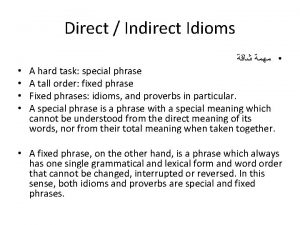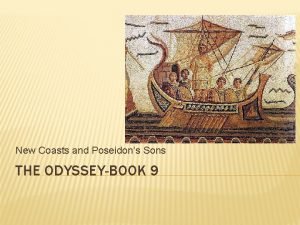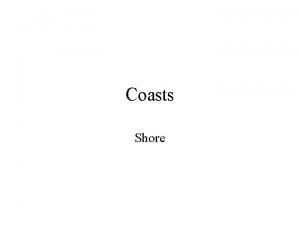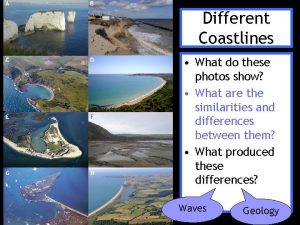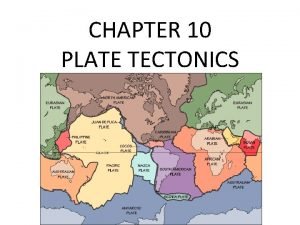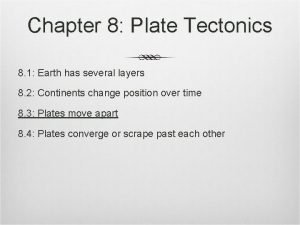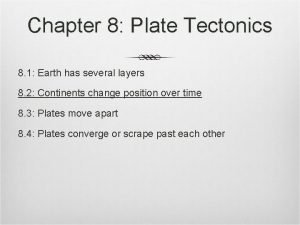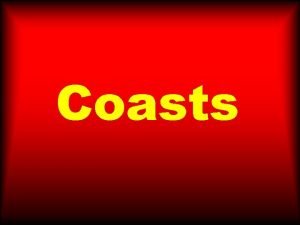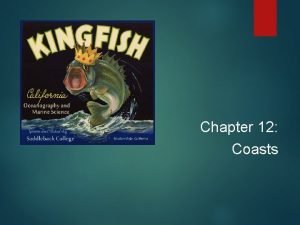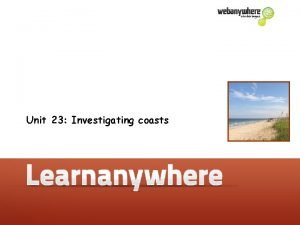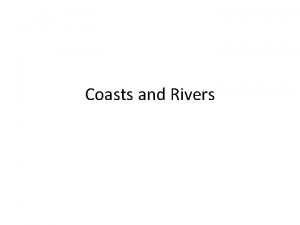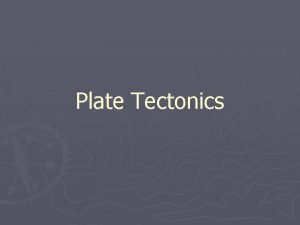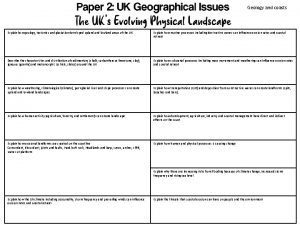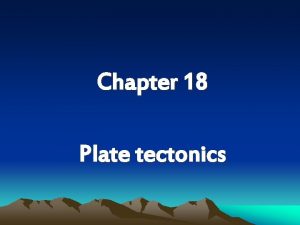Chapter 12 Coasts Classification difficult task tectonics active















- Slides: 15

Chapter 12: Coasts

Classification (difficult task) © tectonics ©active ©passive © sea-level change ©may vary widely ©causes ©global (eustatic) © from +6 m to -125 m in the last 2 MY © volume of water available (can be tied up in ice) © capacity of ocean basins (can be reduced by faster seafloor spreading) © volume changes due to temp changes ©local © tectonics © isostacy

Primary Coasts ©characterisitics ©young ©usually shaped by terrestrial processes ©sea level change exposes new areas to erosion ©heavy deposition extends the land into the sea

Primary coasts © cut by land erosion, then flooded by sea-level rise ©drowned river valleys ©fjords © cut by wave erosion, then sea-level falls ©wave-cut terraces © built out by land processes ©river deltas - fig p 294 © moraines © volcanic © earth movement ©upward ©downward

Secondary Coasts ©old ©shaped by waves

Secondary Coasts: Wave Erosion © methods ©abrasion ©hydraulic pressure ©dissolution © effects ©sea cliffs ©sea caves ©sea stacks and arches ©wave-cut platform ©shore straightening ©caused by wave refraction ©waves focus on headlands

Secondary Coasts: Beaches © deposits that accumulate in low energy areas © sand is always being moved © profile fig p 300 © backshore - cliffs, dunes, seawall © berm crest © foreshore - intertidal zone © off shore - longshore trough and bar © rip currents © on-shore and off-shore © seasonal © big waves - sand moves off-shore © small waves - sand moves back on-shore © effect of sea walls

Secondary Coasts: Transportation & Deposition © longshore drift ©transportation ©wave motion pushes in at an angle ©gravity pulls straight out ©sand moves along the shore ©effects ©sand moves in the direction of the predominant waves ©barrier islands ©spits, baymouth bars, & tombolos ©effects of groins, piers, jetties, breakwaters

Secondary Coasts: Transportation & Deposition ©coastal cells ©sand moves ©entry point - cliffs, river, etc ©longshore drift ©exit point - submarine canyon ©human structures (dams, groins, jetties, piers, breakwaters) can block flow of sand

Other Types of Coasts ©reefs ©mangrove swamps ©estuaries

Estuaries © types © characterisitics ©salt-wedge ©partially mixed ©well mixed ©fjord ©reverse ©drowned river mouths ©fjords ©bar-built (barrier © value island lagoons) ©productive ©tectonic (grabens) ©sheltered ©brackish ©nurseries for the ocean ©lagoons & wetlands




 Submergent coast
Submergent coast The most difficult persuasive task is to
The most difficult persuasive task is to Special phrase
Special phrase New coasts and poseidon's son
New coasts and poseidon's son Classifying coasts
Classifying coasts Positive feedback geography coasts example
Positive feedback geography coasts example Discordant coastline
Discordant coastline Estuaries and coasts
Estuaries and coasts Fossils as evidence of continental drift
Fossils as evidence of continental drift Chapter 8 plate tectonics
Chapter 8 plate tectonics Chapter 8 plate tectonics
Chapter 8 plate tectonics Tiered task bias task
Tiered task bias task And or boolean
And or boolean Primary vs secondary active transport
Primary vs secondary active transport Primary active transport vs secondary active transport
Primary active transport vs secondary active transport Plate tectonics vs continental drift
Plate tectonics vs continental drift


